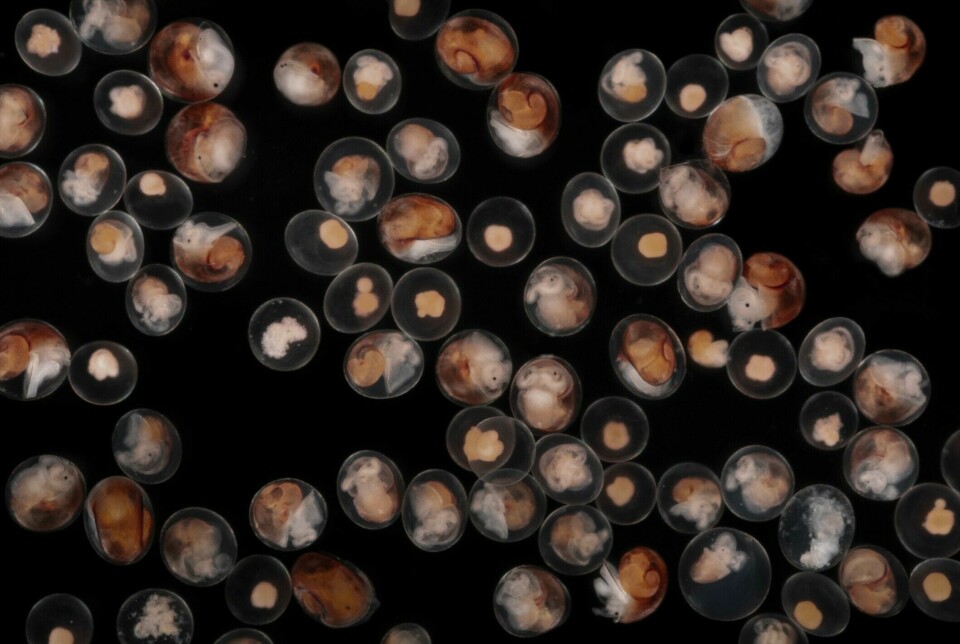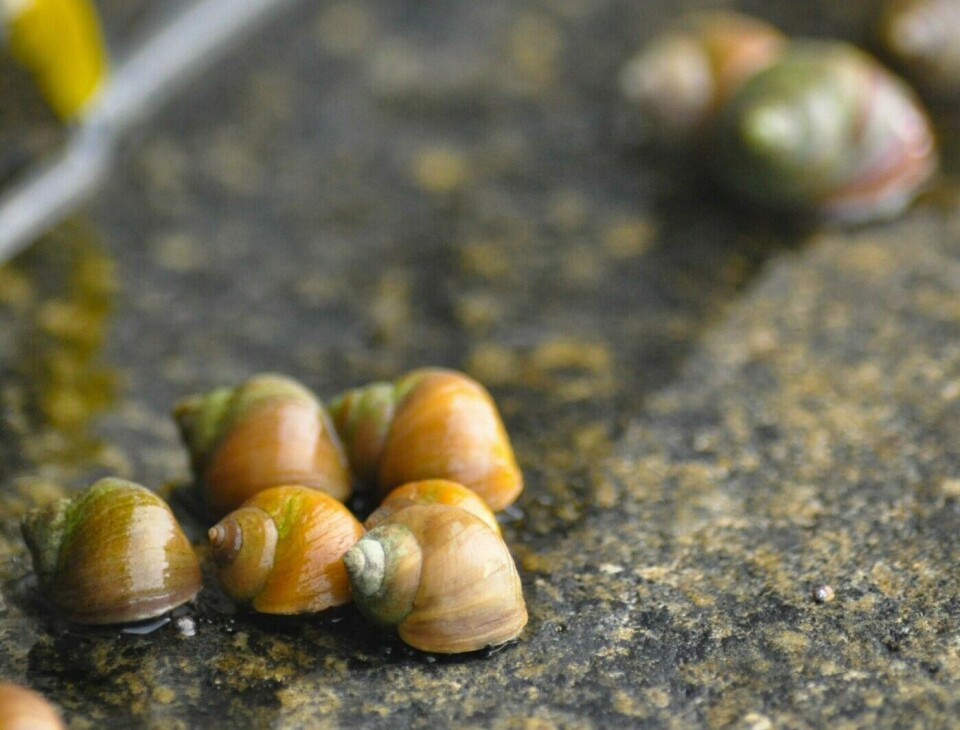THIS CONTENT IS BROUGHT TO YOU BY Nord University - read more

One snail lays eggs, the other gives birth to live offspring. What has happened?
The periwinkle snail Littorina saxatilis does not lay eggs but gives birth to fully developed youngsters. Something must have happened – and that less than 200,000 years ago.
Sometimes, evolution brings about innovations that are real ‘game-changers’ for nature. The eye and vision develop. Birds begin to fly. Animals begin to give birth to live young, instead of laying them as eggs on the ground.
Researchers call these key innovations, central inventions in the development of species that give organisms entirely new opportunities to live and reproduce. But how do such innovations arise?
“The problem with studying the underlying genetic mechanisms behind such major changes is that they lie so far back in time. The more time that has passed, the more difficult it is,” Anja Westram says.
She is a researcher at Nord University's Faculty of Biosciences and Aquaculture.
Dozens of Mutations
However, on the rocky shores in the tidal zone, there lives a small creature that has given researchers the opportunity to study such dramatic genetic changes. If not in real-time, then at least relatively shortly after they have occurred.
The small snail Littorina saxatilis, known as rough periwinkle, looks exactly the same as its close relative Littorina arcana. The latter reproduces in the usual snail way by laying eggs, while the periwinkle snail gives birth to fully formed snail babies.

Recently, Westram and her research colleagues were able to show how the transition from laying eggs to giving birth to live young in these snails most likely developed over the last 100,000 years. The results were recently published in the prestigious journal Science.
“One of the big questions is whether such changes occur due to a single, decisive mutation, or if there is a series of mutations. We found that there were dozens of mutations within 50 different small regions, so-called genomic windows. These were scattered throughout the entire genome of the snail,” Westram explains.
A genome is the total amount of hereditary material that the organism carries. All the DNA in the cells, from A to Z. In other words, it is not a single gene that leads to the shift from egg-laying to live births. At least not in these snails.
Eggs pose limitations
The mutated genes are not grouped together in a sort of give-birth-to-live-young section in the DNA.
“Instead, they are distributed over a range of different genes, which probably code for quite different things,” says Westram.
“One would think the genes were gathered in a specific region of the DNA?”
“Yes, exactly. That's why many researchers find these findings interesting. There are theories about how such major changes happen. That there is one big lucky mutation that changes a specific trait. In some cases, it might happen, but we found that there were many. Spread all over,” she says.
The result of the shift from eggs to live young can be observed by the researchers in the tidal zone. While the egg-laying L. arcana mostly has to stay in areas where the eggs can be laid in moist cracks and crevices, L. saxatilis can spread out over larger living areas.
“These are two completely different ways of reproducing. Eggs must be laid where they can survive. These eggs are not like chicken eggs with hard shells. They are gelatinous clumps that easily dry out. They need a lot of water in the environment. If you do not lay eggs, you can carry the young inside you until they are big enough to survive in drier areas,” Westram says.
Recognising their fellow species
Researchers assume that the two species have been separate species for only 100,000-200,000 years. The only difference between them is the way they give birth. That they actually are two different species, we know from the genetic differences seen when studying the DNA.
“They live side by side, but they do not mix with each other. They meet, and they sometimes mate with each other. But they do not have offspring together,” says Westram.

“How do we know that?”
“Then we would have found hybrids, crossings. But extensive studies have been done on this, and we do not find hybrids,” she says.
“So they might have a kind of secret method of knowing that the one they mate with is of the same species?”
“Yes, I actually think so. A student of ours has studied this by observing the snails. She found that they usually did not mate with the other species, so there must be something that makes them dislike each other. A kind of cascade of various barriers. Presumably, they are not genetically compatible, so that the offspring are not born,” she says.
The two species not only have different living areas in the tidal zone. While L. saxatilis with its live-born young is widespread both in Europe and the USA, we find the egg-laying L. arcana only along the coast of Norway and France and on the British Isles.
Challenges the scientific definitions of species
Surprisingly, the northern variants of the two species genetically resemble each other more than the northern and southern variants of L. saxatilis, which are considered the same species.
When researchers place the two species in a so-called phylogenetic tree, which is supposed to show how the species have developed and the kinship between them, L. arcana ends up between the two geographically separate variants of L. saxatilis.
“Along the coast of Northern Europe, the two species live side by side, and it is assumed that they initially crossed with each other. Maybe that’s why they are genetically so similar. But if you read between the lines in our article, you will see that we are not really sure what this means. I think maybe it just shows that we still do not quite know what defines a species,” says Westram.
Reference:
Stankowski et al. The genetic basis of a recent transition to live-bearing in marine snails, Science, vol. 383, 2024. DOI: 10.1126/science.adi2982
———
Read the Norwegian version of this article on forskning.no

This content is paid for and presented by Nord University
This content is created by Nord University's communication staff, who use this platform to communicate science and share results from research with the public. Nord University is one of more than 80 owners of ScienceNorway.no. Read more here.
More content from Nord University:
-
Kateryna's university has been bombed three times – but she's still teaching
-
5 things you didn't know about smart cities in the Arctic
-
AI sparked an idea that could improve road safety in Norway
-
These algae have been adapting for hundreds of millions of years
-
Could traces of bacteria in water combat salmon disease?
-
Bladderwrack in animal feed has the potential to reduce methane emissions




































